

36 Hours in Khajuraho: Exploring The Stories, Sculptures, and Stillness
To go by popular belief, Khajuraho is often seen as living proof that the Kama Sutra originated in India. But spend a few hours walking through these temples, and you’ll realise that the erotic sculptures comprise just about 10% of the carvings, and are far from the whole story!
The rest? A beautiful and intricate celebration of everyday life from a thousand years ago. Women looking into mirrors, musicians playing flutes, potters shaping clay, farmers at work—frozen in stone, yet alive in spirit. These temples, built by the Chandela dynasty between the 9th and 11th centuries, are not just architectural marvels; they are chronicles etched in sandstone.
Khajuraho: A Glimpse into the Past
Built by the Chandela Dynasty between the 9th and 12th centuries, Khajuraho once had 85 temples, of which only around 20 survive today. Crafted in the Nagara style, these temples reflect a time when art, architecture, and spirituality flourished in Central India.
First mentioned by Al-Biruni in 1022 AD and later by Ibn Battuta, Khajuraho was once a thriving cultural hub. But invasions during the Delhi Sultanate and a destruction drive by Sikander Lodi in the 15th century led to its decline. Over time, khajur (date palm) trees overtook the ruins, hiding them from the world until British surveyor T.S. Burt rediscovered them in the 19th century.
Legend has it that the temples were inspired by Hemvati, a beautiful woman who enchanted the Moon God and gave birth to Chandravarman, founder of the Chandela dynasty. That celestial love story still echoes in stone.
A Complete Guide To Exploring Khajuraho In Just 36 Hours
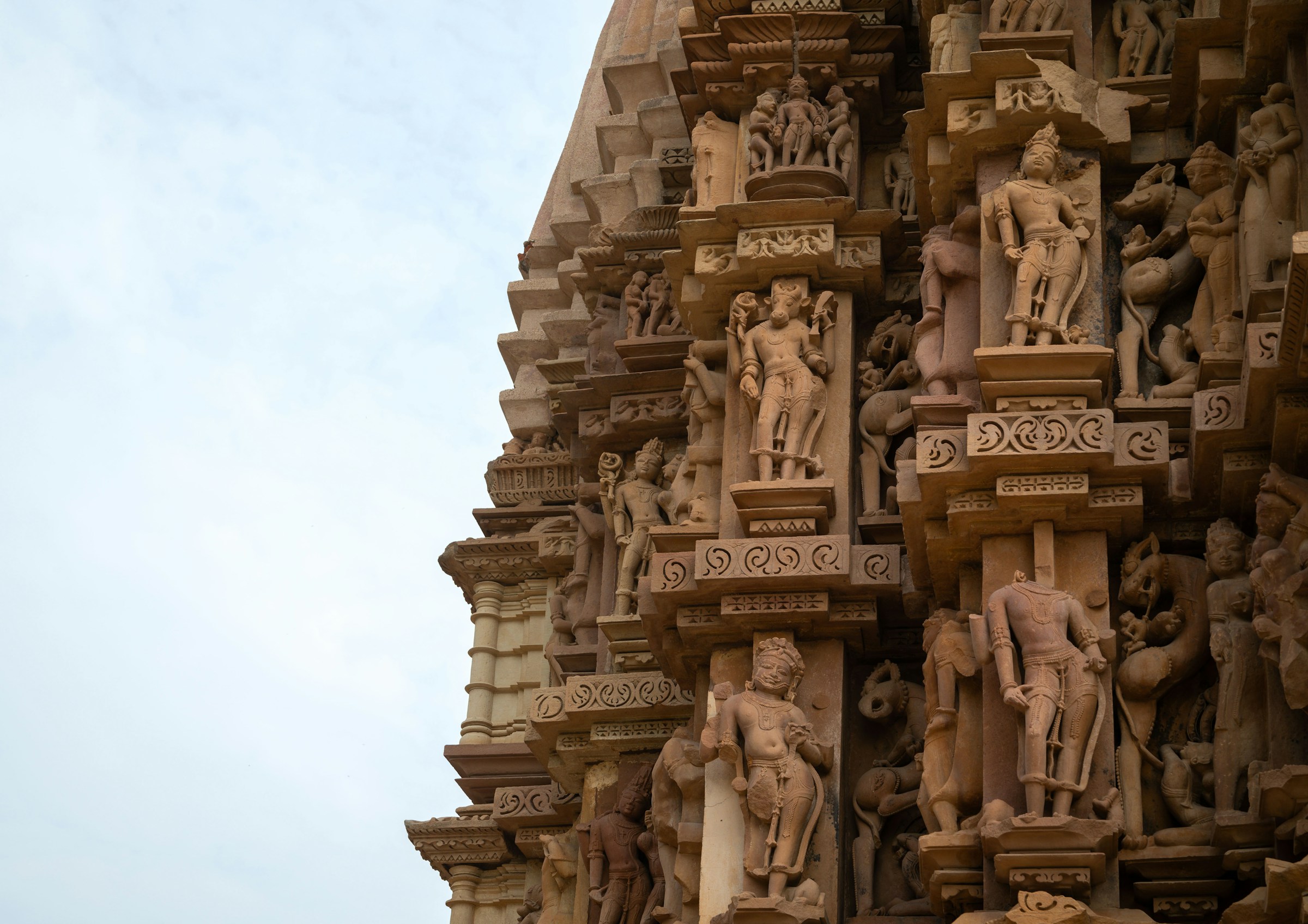
Day 1: Exploring the Temples, Textures & Twilight
We started a little late, post-breakfast. As we headed towards the temple complex, we realised that the Western Group of Temples is the most iconic and accessible. This is where you’ll find the Kandariya Mahadev, Lakshmana, and Devi Jagadamba temples, all UNESCO World Heritage Sites and masterpieces of Nagara-style architecture.
Each temple has a distinct personality:
Kandariya Mahadev is the tallest and most intricately carved, with scenes celebrating life, desire, and divinity in equal measure.
Lakshmana Temple is older and was built in the Pancha Ratha style. It’s said that nearly 600 deities reside here through symbolic carvings.
Devi Jagadamba is a tribute to feminine power and grace. Its sculptures depict union, peace, and mythology.
Contrary to popular assumptions, these carvings don’t portray divine lovemaking. Rather, they depict human experiences and sensuality as a part of life, not as a part of it.
We headed towards the Eastern Group in the evening, known for Jain temples like Parsvanath, Adinath, and Ghantai. These are quieter, tucked away in dusty lanes and old villages, perfect if you love unhurried walks. We reached just before sunset and had these temples almost to ourselves.
The Southern Group, including Dulhadeo and Chaturbhuj, is closer to the airport and often skipped, but it is well worth a visit, especially if you’re into architectural details and spiritual symbolism.
Before calling it a night, we watched the Light & Sound Show at the Western Complex, narrated by Amitabh Bachchan. It felt like the perfect closure for Day 1, immersive, poetic, and informative.
Dinner was at the charming Raja Cafe, located just opposite the temple gate. Established decades ago and now run by two sisters who inherited it from the Maharaja of Chhatarpur, the place has a legacy of its own. With a view of the lit-up temples, delicious food, and warm staff, it’s hard not to return.
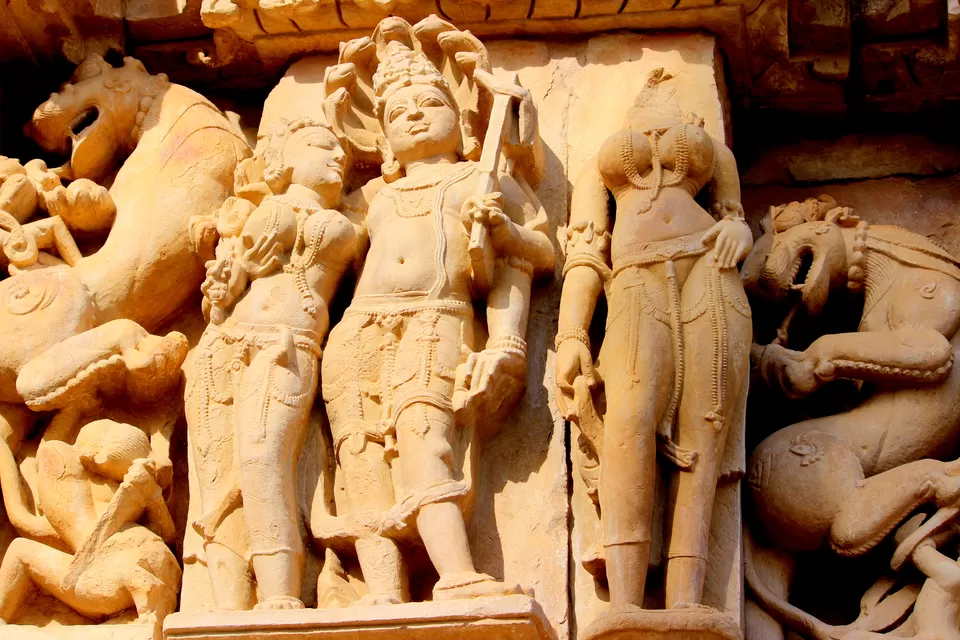
Day 2: Taking a Closer Look with New Perspectives
After breakfast at the Clarks, we returned to the Western Complex for another slow walk. This time, we hired a local guide (INR 1600 for 2–3 hours). While we usually prefer discovering places on our own, the guide added layers to the experience.
(Well, I have to say, I love how Indian guides narrate the stories, layered with half fact and half fiction, with a touch of their own!) He spoke of how erotic sculptures were considered auspicious, meant to stir passion and vitality within people, reflecting the open-mindedness of the era. His anecdotes made the temples come alive in unexpected ways, like how figures were carved deliberately at eye-level for better engagement, or how some motifs mirrored ancient yogic postures.
As my friend wandered off with her camera, I paused longer at corners where I had rushed past the previous day. And trust me when I say this, these temples have a way of growing on you.
We had a quick brunch! Yes, again at Raja Cafe (because why not?), before continuing to Panna National Park, just 45 km away. That transition, from ancient temples to wild forests, felt like stepping from one epic adventure to another.
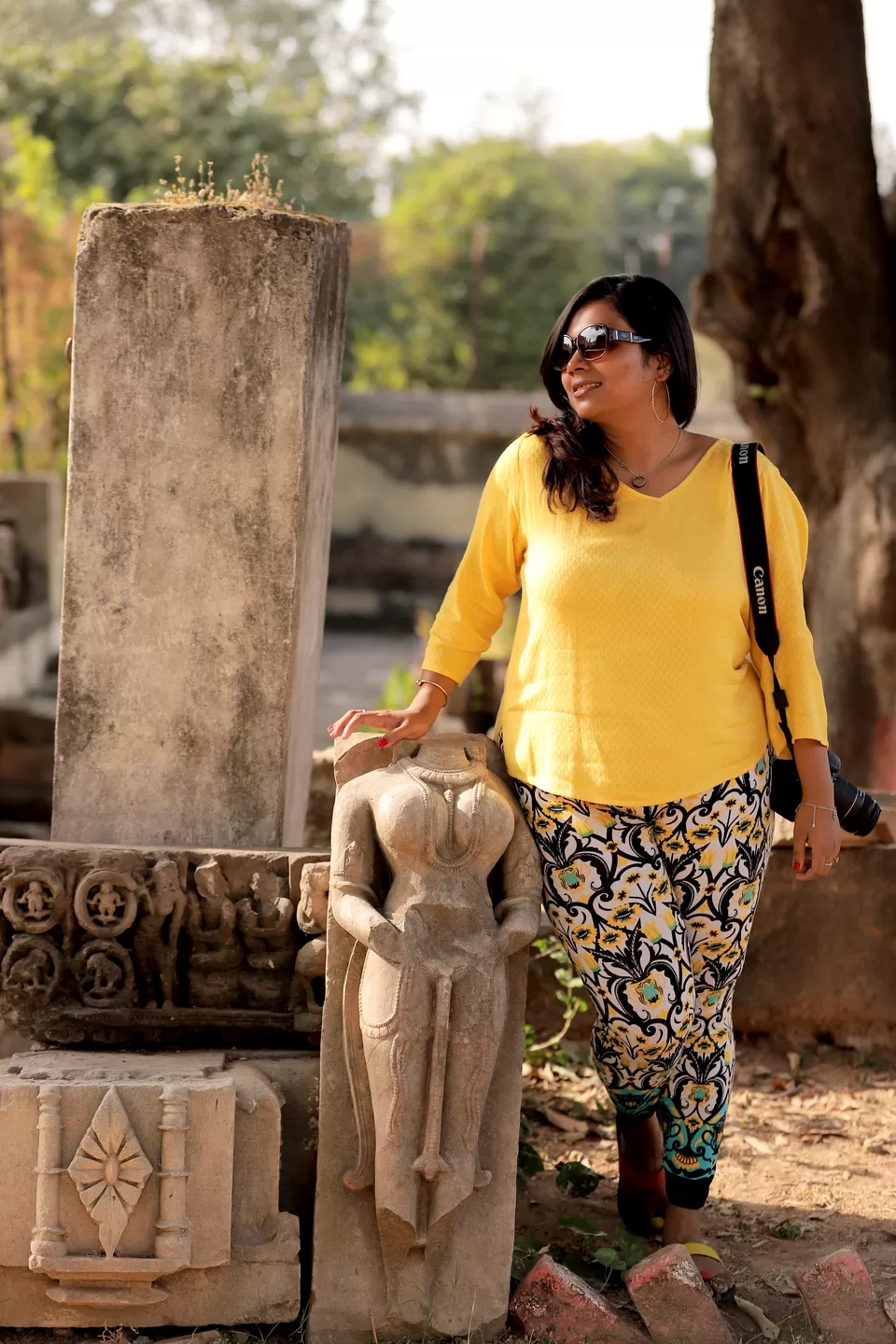
How To Reach & Where To Stay?
Located around 620 km from Delhi, Khajuraho is well-connected by air and rail. As I was travelling from New Delhi, I took the UP Sampark Kranti Express on a Friday night and reached early Saturday morning, refreshed and ready to explore.
If you’re on a budget and love backpacker vibes, Zostel is just next to the Western Group of Temples entrance; it doesn’t get more convenient than that. Khajuraho offers plenty of options for a more leisurely stay, from Radisson to The Lalit and Oberoi Amarvilas. We checked into Clarks Khajuraho, a peaceful retreat about 10 minutes from the temples. Since we went in December, the crisp winter air made it perfect for walking everywhere.
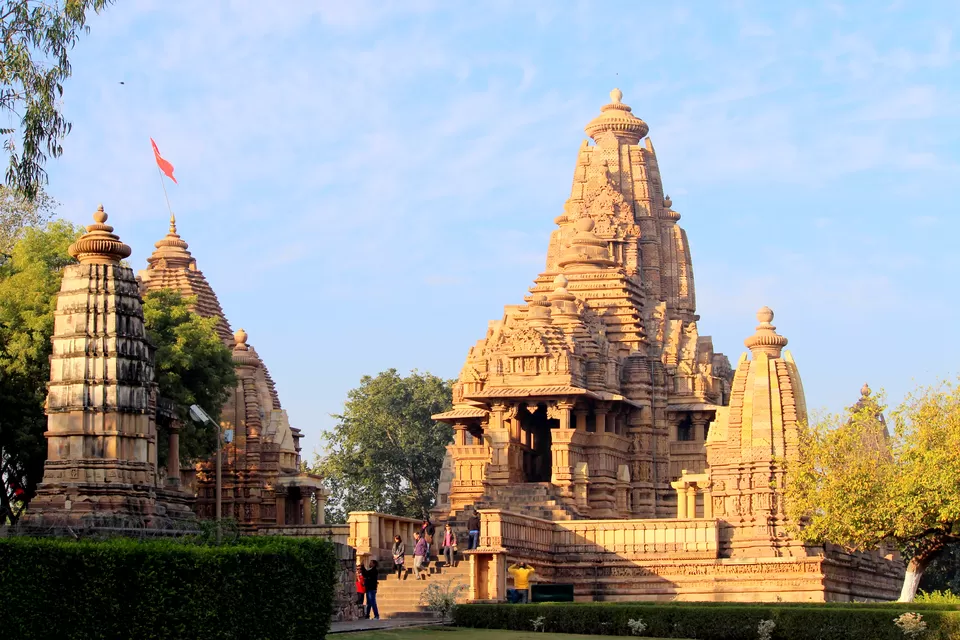
A Few Practical Tips to Help You Plan Better
Best Time to Visit: October to March, when the weather is pleasant for walking.
Entry Fees: INR 40 for Indians and INR 600 for foreigners. Tickets are available at the Western Group.
Local Transport: Autorickshaws and bicycles are common. You can also just walk—distances are short, and streets are scenic.
Guides: Official guides are available near ticket counters. Clarify prices before starting.
What to Wear: Comfortable cotton in summer, light woollens in winter, and shoes you can walk long distances in.
Nearby Attractions: For a fuller itinerary, combine Khajuraho with Panna National Park, Raneh Falls, or Ajaygarh Fort.
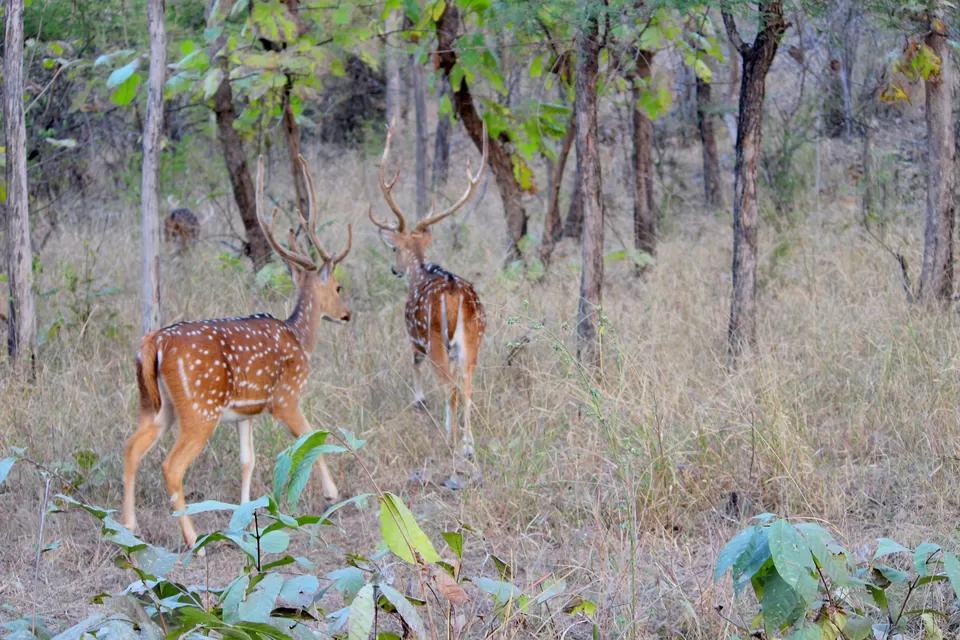
Fun fact: It’s said the name ‘Khajuraho’ itself comes from these date palms, khajur in Hindi, whose dense growth once concealed the temples for centuries.
Frequently Asked Questions About Khajuraho
Where is Khajuraho located?
Khajuraho is in the Chhatarpur district of Madhya Pradesh, India. It is approximately 175 km from Jhansi and 45 km from Panna National Park.
Why is Khajuraho famous?
Khajuraho is renowned for its Hindu and Jain temples, which are UNESCO World Heritage Sites. These temples are celebrated for their intricate carvings, sensual sculptures, and depictions of daily life, mythology, and spirituality.
What is the best time to visit Khajuraho?
The best time to visit is from October to March, when the weather is pleasant. Summers (April to June) can be extremely hot, while monsoons (July to September) bring moderate rainfall.
What are the must-visit temples in Khajuraho?
- Western Group of Temples (UNESCO World Heritage Site): This includes Kandariya Mahadev Temple, Lakshmana Temple, and Vishwanath Temple.
- Eastern Group of Temples: Includes Jain temples like Parshvanatha and Adinath Temple.
- Southern Group of Temples: Includes Dulhadev Temple and Chaturbhuj Temple.
How much time is needed to explore Khajuraho?
A 2–3 day trip is ideal to explore the temples, light and sound show, and nearby attractions like Panna National Park and the Raneh Falls.
Are the temples only about erotic sculptures?
No, the temples represent a balance of life. While the erotic sculptures form a small portion, the carvings depict daily life, divine deities, musicians, dancers, and animals, symbolising human and spiritual connections.
What cultural experiences are available in Khajuraho?
- Light and Sound Show: Held every evening in the Western Group of Temples, narrating the history of Khajuraho.
- Khajuraho Dance Festival: A week-long festival held in February, showcasing classical Indian dance forms.
Is Khajuraho safe for solo travellers?
Yes, Khajuraho is generally safe for solo travellers, including women. Basic precautions, like avoiding isolated areas after dark, are recommended.
What is the historical background of the Khajuraho temples?
The temples, built between the 10th and 12th centuries, belonged to the Chandela dynasty. They reflect Nagara-style architecture and are dedicated to Hindu and Jain deities.
I believe travel is a matter of choice, but if you’re drawn to the richness of Indian culture, art, and architecture, and find yourself intrigued by mythical tales, then Khajuraho is a place you simply shouldn’t miss.
(This post may contain affiliate links, which means I may earn a small commission at no extra cost to you if you make a purchase through them.)













If you love differen culture, tradition and art then India is the best country for travellers. You will feel the touch of different tradition in different states. Jaipur, a capital city in Rajasthan is one of the best destination for vacation. Stay here at best hostel in Jaipur, stay for sometime and explore diversities of Jaipur.